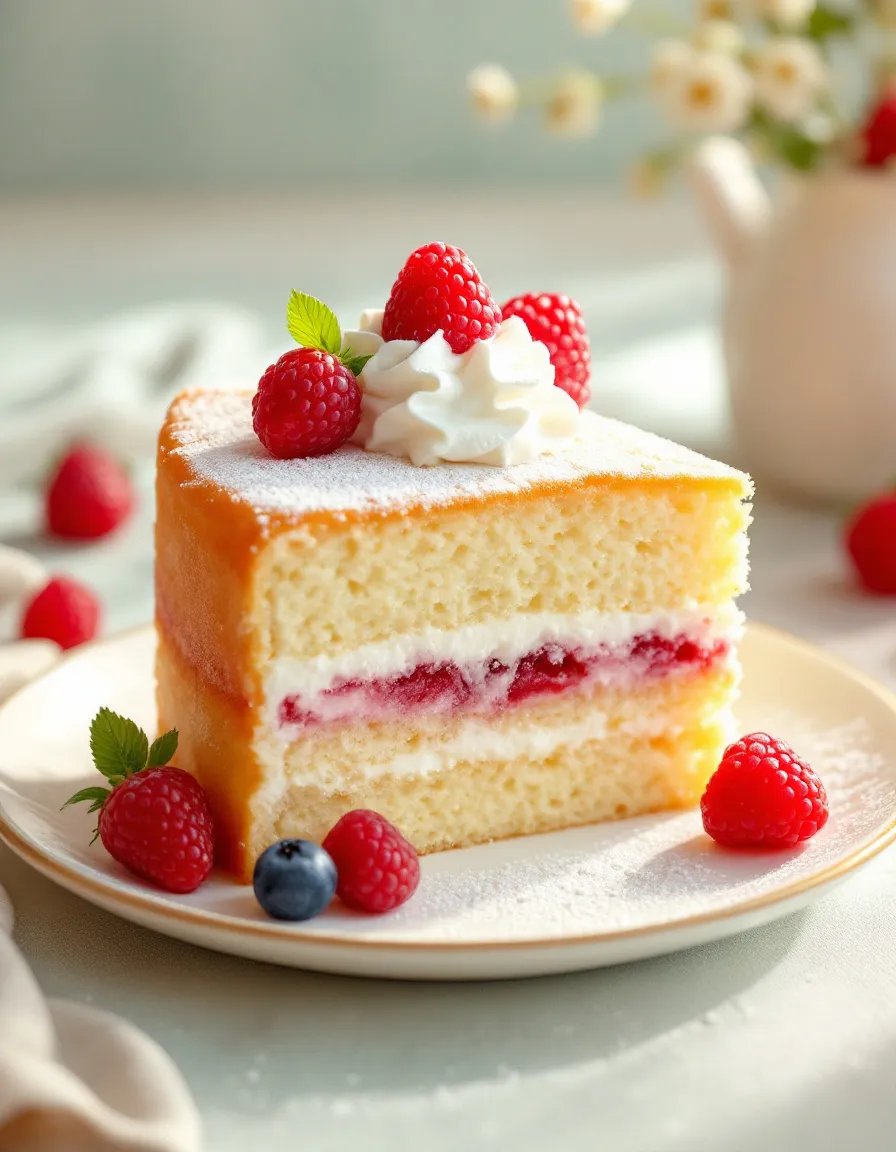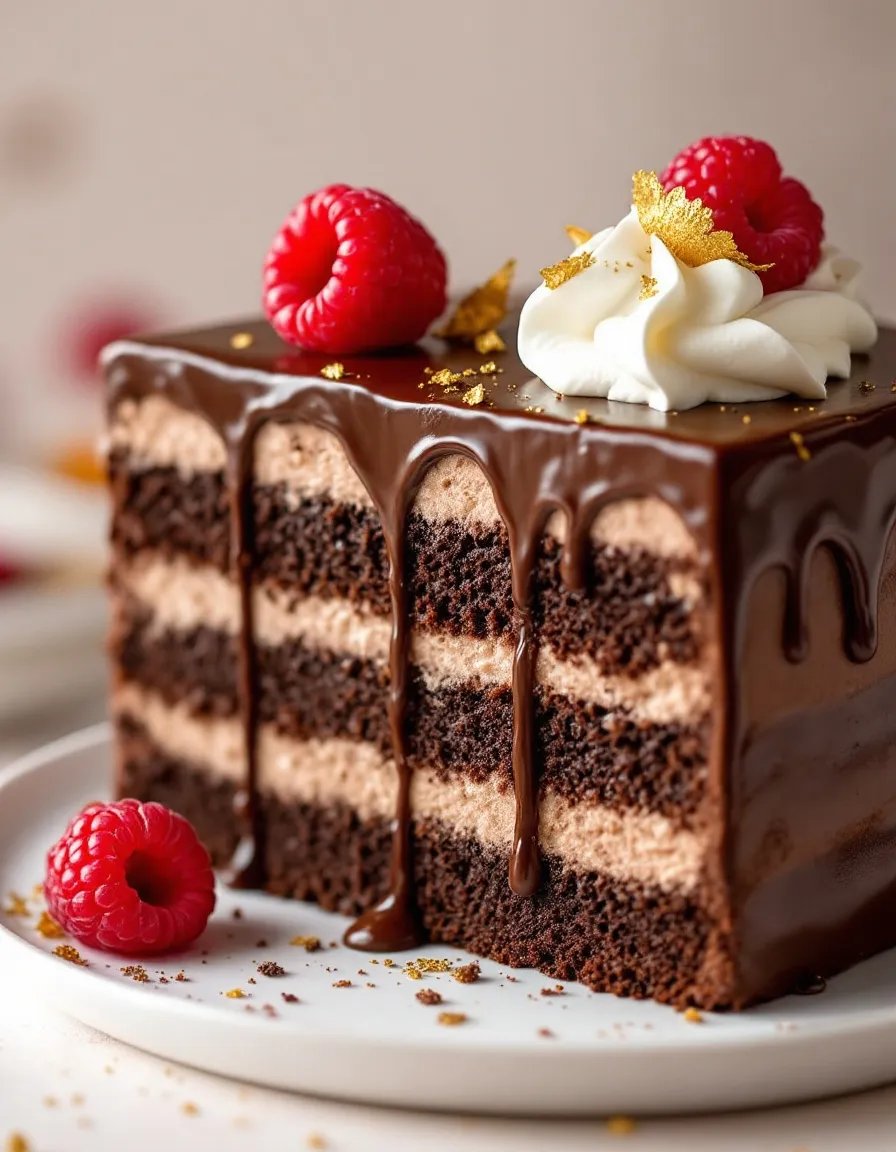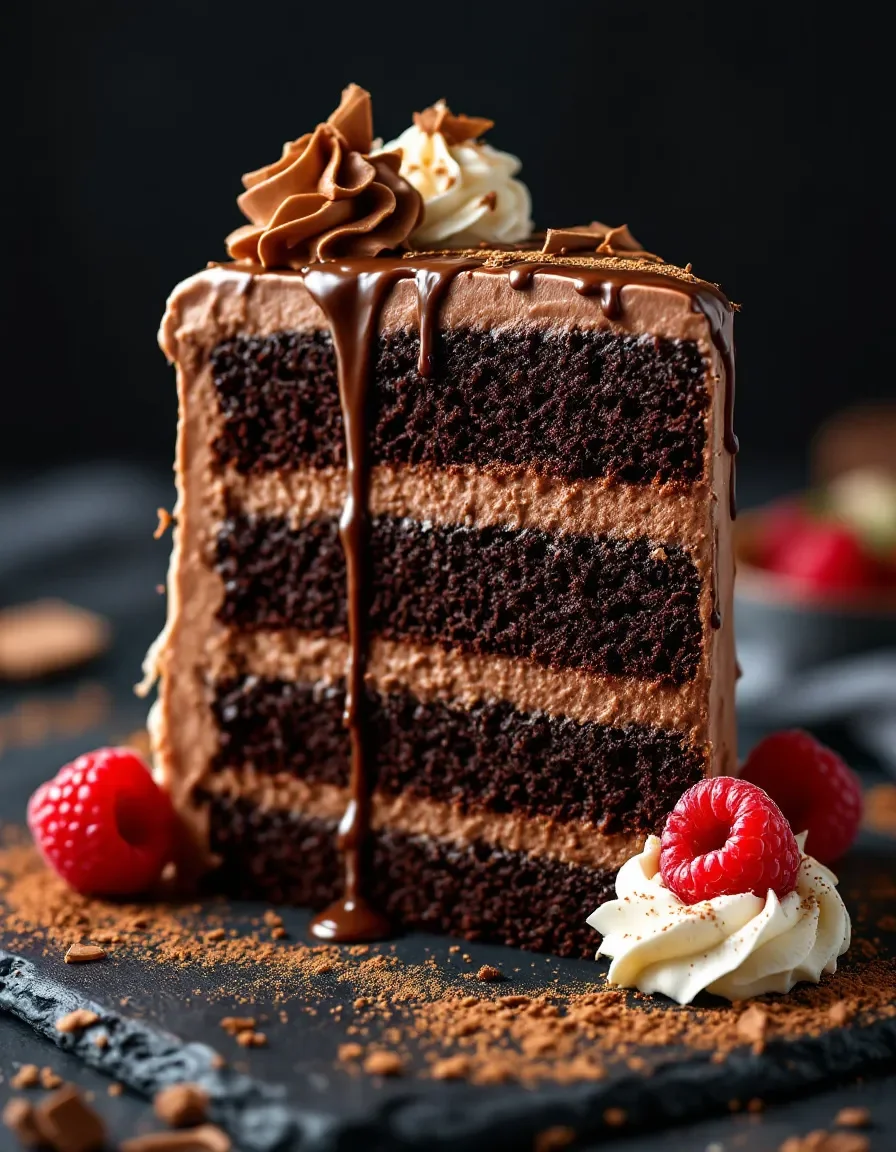Japanese Cotton Cake: The Fluffiest, Most Delicate Dessert You’ll Ever Make
Japanese cotton cake, also known as soufflé cheesecake, is a cloud-like dessert that melts in your mouth with its impossibly light texture. This delicate cake combines the richness of cheesecake with the airy fluffiness of a soufflé, creating a dessert experience unlike any other. The moment you take your first bite, you’ll understand why this cake has taken the baking world by storm.
What makes Japanese cotton cake so special is its unique preparation method that incorporates whipped egg whites into a creamy batter, resulting in an ethereal texture that jiggles beautifully when fresh from the oven. The cake’s golden top gives way to a pale, creamy interior that’s neither too sweet nor too rich—just perfectly balanced. Whether served plain, dusted with powdered sugar, or accompanied by fresh berries, this cake is sure to impress both visually and gastronomically.
Quick Recipe Highlights
- Flavor Profile: A delicate balance of sweet and creamy with subtle vanilla notes, Japanese cotton cake offers a sophisticated dessert experience that’s less sweet than traditional Western cakes.
- Texture: The defining characteristic is its cloud-like, jiggly texture—simultaneously light as air yet rich and moist, with a melt-in-your-mouth quality.
- Aroma: The cake fills your kitchen with the comforting scents of vanilla and butter, with a subtle cream cheese note that becomes more pronounced as it cools.
- Visual Appeal: With its golden-brown top and pale interior, the cake has a beautiful contrast that makes it perfect for elegant presentations.
- Skill Level Needed: While not overly complex, this recipe requires careful attention to egg white whipping and gentle folding techniques for perfect results.
- Special Equipment: You’ll need a springform pan, parchment paper, and ideally a stand mixer for best results when whipping the egg whites.
Recipe Overview
- Difficulty Level: This Japanese cotton cake recipe is rated intermediate because it requires precision in whipping egg whites to stiff peaks and careful folding to maintain airiness. The water bath baking method also adds a layer of technique.
- Category: Perfect as a dessert for special occasions, afternoon tea, or when you want to impress guests with your baking skills.
- Cuisine: Originating from Japan, this cake represents the Japanese approach to desserts—subtly sweet, beautifully presented, and texturally remarkable.
- Cost: Using basic ingredients like eggs, cream cheese, and sugar, this cake is relatively economical to make despite its luxurious results.
- Season: While delicious year-round, Japanese cotton cake is particularly refreshing in spring and summer when lighter desserts are preferred.
- Occasion: Ideal for birthdays, anniversaries, or any celebration where you want to serve something unique and memorable.
Why You’ll Love This Japanese Cotton Cake
The first thing you’ll notice about Japanese cotton cake is its incredible texture—so light it practically floats on your tongue, yet rich enough to satisfy your dessert cravings. Unlike dense American cheesecakes or overly sweet sponge cakes, this dessert strikes the perfect balance between indulgence and delicacy. The cake’s signature jiggle when it comes out of the oven is not just fun to watch—it’s a promise of the ethereal eating experience to come.
From a preparation standpoint, this recipe offers the satisfaction of mastering a technique that yields impressive results. The process of carefully folding whipped egg whites into the batter is almost meditative, and the transformation in the oven from liquid to cloud-like cake is nothing short of magical. While the technique requires some attention to detail, the steps are straightforward and well within reach of home bakers looking to expand their skills.
Nutritionally, Japanese cotton cake offers a lighter alternative to traditional cheesecakes. With less sugar and a higher proportion of egg whites, it provides protein while keeping calories reasonable. The small portion size (thanks to its richness) also helps with portion control—though you might find it hard to stop at just one slice!
For entertaining, this cake is a showstopper that will have guests asking for your recipe. Its elegant appearance and unique texture make it perfect for dinner parties, bridal showers, or as a special treat for afternoon tea. The cake’s subtle flavor also makes it versatile for pairing with various toppings—from fresh fruit to chocolate sauce or even matcha powder for a green tea variation.
Finally, this recipe is surprisingly economical for such a luxurious result. Using basic pantry staples with just a few special ingredients (like cream cheese), it delivers restaurant-quality dessert at a fraction of the cost. The cake keeps well for several days in the refrigerator, making it perfect for making ahead when entertaining.
Historical Background and Cultural Significance
Japanese cotton cake, while a relatively modern creation, has roots in both Western cheesecake traditions and Japanese culinary philosophy. The dessert emerged in Japan during the 20th century as patissiers began adapting European baking techniques to local tastes. Unlike its dense New York-style counterpart, the Japanese version reflects the cultural preference for lighter, less sweet desserts that emphasize texture and subtlety.
The cake’s popularity exploded in the 1990s when Japanese bakeries began perfecting the technique to create impossibly light versions. Its signature jiggle—known as “fuwa fuwa” (fluffy) in Japanese—became a viral sensation long before social media, with customers lining up for hours to experience this textural marvel. The cake represents the Japanese approach to Western foods known as “yōshoku”—adapting foreign dishes while maintaining Japanese sensibilities.
Over time, regional variations developed across Japan. Some bakeries added matcha powder for a green tea version, while others incorporated local fruits like yuzu or sakura (cherry blossom) flavors. The basic technique remained consistent—a careful balance of whipped egg whites and a rich batter baked in a water bath to achieve that signature cloud-like texture.
Today, Japanese cotton cake holds a special place in Japan’s renowned pastry culture. It’s frequently featured in dessert cafes and continues to inspire new variations. The cake’s popularity has spread globally, with bakers worldwide attempting to master its delicate texture. It stands as a testament to Japan’s ability to take foreign concepts and refine them into something uniquely beautiful.
Ingredient Deep Dive
Cream Cheese: The foundation of Japanese cotton cake’s rich flavor, cream cheese should be at room temperature for smooth incorporation. Full-fat varieties work best for the creamiest texture. In Japan, bakers often use a local cream cheese that’s slightly less tangy than American versions, but Philadelphia-style works perfectly. For those with dairy restrictions, there are excellent plant-based cream cheeses that can substitute well.
Eggs: The separation and whipping of eggs is crucial to achieving the cake’s signature height and texture. Fresh eggs at room temperature whip to greater volumes. The yolks contribute richness while the whites provide structure and lift. For best results, ensure no yolk contaminates the whites when separating, and use a clean, grease-free bowl for whipping.
Milk: Whole milk provides the ideal fat content for a creamy batter without weighing it down. In Japan, bakers sometimes use a combination of milk and heavy cream for extra richness. For dairy-free versions, oat milk or almond milk can substitute, though the texture may be slightly less creamy.
Cake Flour: The low protein content of cake flour creates a tender crumb. If unavailable, you can make a substitute by replacing 2 tablespoons per cup of all-purpose flour with cornstarch. Sifting the flour is essential to prevent lumps in the delicate batter.
Sugar: Fine granulated sugar dissolves best in both the egg whites and batter. Japanese desserts typically use less sugar than Western versions, so this recipe maintains that balance. The sugar in the egg whites helps stabilize the foam, while the sugar in the batter balances the cream cheese’s tang.
Common Mistakes to Avoid
- Overbeating egg whites: While you want stiff peaks, going beyond can make the whites grainy and difficult to incorporate smoothly. Stop when the peaks hold their shape but are still glossy.
- Deflating the batter: Folding too vigorously will knock out the precious air bubbles. Use a gentle, scooping motion and stop as soon as no white streaks remain.
- Improper water bath: The water should come about halfway up the pan’s sides. Too little water risks uneven baking; too much may make the bottom soggy.
- Opening the oven door: Resist peeking during the first 30 minutes of baking, as sudden temperature drops can cause collapse.
- Underbaking: The cake should be set with just a slight jiggle in the center. A toothpick inserted near the edge should come out clean.
- Cooling too quickly: Let the cake cool gradually in the turned-off oven with the door slightly ajar to prevent sinking.
- Wrong pan size: Using a larger pan will result in a flatter cake; smaller may cause overflow. An 8-inch springform is ideal.
- Not lining the pan: Parchment paper on the bottom and sides ensures easy release of this delicate cake.
Essential Techniques
Egg White Whipping: The key to Japanese cotton cake’s height and texture lies in perfectly whipped egg whites. Start with room temperature whites in a scrupulously clean bowl. Whip on medium speed until frothy, then gradually add sugar. Increase speed to high until stiff, glossy peaks form that hold their shape when the whisk is lifted. The foam should be dense enough that you can turn the bowl upside down without it sliding out.
Folding Technique: Incorporating the whipped whites without deflating them requires patience. Add about one-third of the whites to the batter first to lighten it. Then gently scoop the remaining whites on top. Using a silicone spatula, cut down through the center, scoop along the bottom, and fold over the top, rotating the bowl as you go. Repeat just until combined—a few streaks are better than overmixing.
Water Bath Baking: This gentle heating method ensures even cooking and prevents cracking. Wrap the springform pan bottom tightly with foil to prevent water seepage. Place in a larger pan and add hot water until it reaches halfway up the sides. The steam creates the moist environment needed for the cake’s signature texture.
Pro Tips for Perfect Japanese Cotton Cake
- Bring all ingredients to room temperature before starting—this ensures even mixing and better volume when whipping egg whites.
- Use a cake strip around your pan for more even baking and to prevent doming in the center.
- For extra insurance against sticking, butter the parchment paper lining your pan.
- If your oven runs hot, reduce the temperature by 25°F to prevent overbrowning.
- Let the cake cool completely in the pan before attempting to remove it—this delicate structure needs time to set.
- For clean slices, use a thin knife dipped in hot water and wiped between cuts.
Variations and Adaptations
Matcha Cotton Cake: Incorporate 1-2 tablespoons of high-quality matcha powder sifted with the flour for a vibrant green tea version. The earthy matcha balances beautifully with the cake’s sweetness.
Chocolate Variation: Melt 3 ounces of high-quality dark chocolate and blend into the yolk mixture. Reduce flour by 2 tablespoons to account for the chocolate’s added structure.
Fruit Swirl: Before baking, dollop fruit puree (raspberry, mango, or passionfruit work well) on the batter and use a skewer to create marbled patterns.
Savory Version: Reduce sugar to 1/4 cup and add grated Parmesan and herbs for an unexpected appetizer variation.
Serving and Presentation Guide
Japanese cotton cake makes its own elegant statement when simply dusted with powdered sugar. For special occasions, top with fresh berries or edible flowers arranged artfully. A drizzle of fruit coulis or chocolate ganache adds visual contrast. Serve slices on plain white plates to highlight the cake’s golden top and pale interior. For afternoon tea, pair with lightly sweetened whipped cream and a pot of green tea. The cake is best served slightly chilled but not cold—remove from refrigerator 15 minutes before serving for ideal texture.
Wine and Beverage Pairing
The delicate sweetness of Japanese cotton cake pairs beautifully with semi-sweet sparkling wines like Moscato d’Asti or a late-harvest Riesling. For non-alcoholic options, try jasmine tea or a lightly sweetened matcha latte. Coffee lovers will enjoy it with a smooth, medium-roast pour-over. The cake’s subtle flavors make it versatile for pairing—avoid anything too bold that would overwhelm its gentle character.
Storage and Shelf Life
Store Japanese cotton cake covered in the refrigerator for up to 5 days. The texture actually improves slightly after a day as the flavors meld. For longer storage, wrap individual slices tightly in plastic wrap and freeze for up to 2 months. Thaw overnight in the refrigerator before serving. Avoid leaving at room temperature for extended periods due to the dairy content. If the cake develops condensation after refrigeration, gently blot with a paper towel before serving.
Make Ahead Strategies
Japanese cotton cake is an excellent make-ahead dessert. Bake 1-2 days before serving for best flavor development. Store whole in the pan, covered with plastic wrap in the refrigerator. Add fresh toppings just before serving. For parties, you can bake the cake base in individual ramekins for easy single servings—reduce baking time to 25-30 minutes. The batter can be prepared up to the folding stage and held briefly (about 30 minutes) before final mixing and baking if needed.
Scaling Instructions
This recipe scales well for different occasions. For a taller cake, increase all ingredients by 50% and use a 7-inch pan, extending baking time by 10-15 minutes. To make mini cakes, divide batter among 6-8 greased ramekins and bake for 20-25 minutes. When doubling for a crowd, bake two separate cakes rather than one large one for best texture. Halving the recipe works perfectly in a 6-inch pan with 35-40 minutes baking time.
Nutritional Deep Dive
A slice of Japanese cotton cake provides a good source of protein from the eggs and cream cheese, with about 6-7 grams per serving. The moderate sugar content (about 15g per slice) makes it a lighter option than most desserts. The cake contains calcium from dairy and various B vitamins from the eggs. While not low-calorie (approximately 220 per slice), the rich flavor means small portions satisfy. For a lighter version, you can reduce the sugar by 1/4 cup without significantly affecting texture.
Dietary Adaptations
Gluten-Free: Replace cake flour with an equal blend of rice flour and cornstarch (3/4 cup total) for similar results.
Dairy-Free: Use plant-based cream cheese and milk alternatives. Coconut cream can add richness if the batter seems thin.
Lower Sugar: Reduce sugar to 1/2 cup total and add 1/4 teaspoon stevia powder to maintain sweetness without compromising structure.
Egg-Free: While challenging, you can experiment with aquafaba (chickpea liquid) whipped to stiff peaks as an egg white substitute.
Troubleshooting Guide
Cake Collapsed: Likely underbaked or cooled too quickly. Next time, bake until just set in the center and cool gradually in the oven.
Dense Texture: Egg whites may have been underwhipped or folded too vigorously. Ensure whites reach stiff peaks and fold gently.
Cracked Top: Oven temperature may be too high. Try reducing by 25°F and baking longer. A water bath should prevent this.
Sticking to Pan: Ensure proper parchment paper lining and let cool completely before removing from pan.
Frequently Asked Questions
Can I make this without a springform pan? While not ideal, you can use a regular cake pan lined with parchment paper extending up the sides for lifting out. The cake may be slightly denser without the springform’s even heat distribution.
Why does my cake have large bubbles? This usually means the batter wasn’t smoothed evenly before baking or was folded too vigorously. Tap the pan gently on the counter before baking to release large air pockets.
Can I skip the water bath? The water bath is essential for the cake’s delicate texture. Without it, the cake will be denser and may crack.
How do I know when it’s done? The cake should be set with just a slight jiggle in the center—like Jell-O. A toothpick inserted near the edge should come out clean.
Can I use bottled lemon juice instead of fresh? Fresh is preferred for the brightest flavor, but bottled will work in a pinch at the same measurement.
Why did my cake shrink? Some shrinkage is normal as it cools. Excessive shrinking may indicate underbaking or opening the oven door too early.
Can I add flavor extracts? Absolutely! Almond, coconut, or citrus extracts can be added (1/2 teaspoon) to the yolk mixture for variation.
Is this the same as Japanese cheesecake? Very similar—the terms are often used interchangeably, though cotton cake tends to be slightly lighter in texture.
Additional Resources
For those captivated by Japanese baking techniques, consider exploring other delicate desserts like castella (a honey-sweetened sponge cake) or dorayaki (red bean pancake sandwiches). Investing in an oven thermometer can help ensure precise baking temperatures crucial for these delicate cakes. Japanese baking books often provide invaluable insights into the precise techniques that make these desserts so special.
Join the Conversation
We’d love to see your Japanese cotton cake creations! Share your photos on Instagram with #CottonCakeMagic and tell us about your experience with this recipe. Have you discovered any clever variations or tips? Join our baking community forum to exchange ideas with other dessert enthusiasts. Your feedback helps us improve and develop more recipes you’ll love.
The Recipe
Japanese Cotton Cake
Serves: 8
Prep Time: 25 mins
Cook Time: 60 mins
Total Time: 85 mins
Kitchen Equipment Needed
- 8-inch springform pan
- Parchment paper
- Stand mixer or hand mixer
- Large roasting pan for water bath
- Aluminum foil
- Silicone spatula
- Fine mesh sieve
Ingredients
- 6 large eggs, separated, room temperature
- 1/4 teaspoon cream of tartar
- 3/4 cup granulated sugar, divided
- 8 oz cream cheese, softened
- 1/2 cup whole milk
- 1/4 cup unsalted butter
- 3/4 cup cake flour
- 1 tablespoon lemon juice
- 1 teaspoon vanilla extract
- 1/4 teaspoon salt
Directions
- Preheat oven to 325°F (160°C). Line the bottom and sides of an 8-inch springform pan with parchment paper. Wrap the outside bottom and sides tightly with aluminum foil to prevent water seepage.
- In a small saucepan, heat milk and butter over low heat until butter melts. Remove from heat and whisk in cream cheese until smooth. Let cool slightly.
- In a large bowl, whisk egg yolks with 1/4 cup sugar until pale. Gradually whisk in the cream cheese mixture, then sift in flour and salt, mixing until just combined. Stir in lemon juice and vanilla.
- In a clean bowl, beat egg whites with cream of tartar on medium speed until frothy. Gradually add remaining 1/2 cup sugar, increasing speed to high until stiff, glossy peaks form.
- Gently fold one-third of the egg whites into the yolk mixture to lighten. Carefully fold in remaining whites until just incorporated, being careful not to deflate.
- Pour batter into prepared pan and smooth the top. Place in a large roasting pan and add hot water until it reaches halfway up the springform’s sides.
- Bake for 55-65 minutes until golden and set with just a slight jiggle in the center. Turn off oven, crack door open, and let cake cool inside for 1 hour.
- Remove from oven and water bath. Cool completely at room temperature, then refrigerate for at least 2 hours before serving.
Recipe Notes
- For clean removal, run a thin knife around the edge before releasing the springform.
- The cake rises during baking but settles as it cools—this is normal.
- Serve chilled but not cold—let sit at room temperature 15 minutes before serving.






